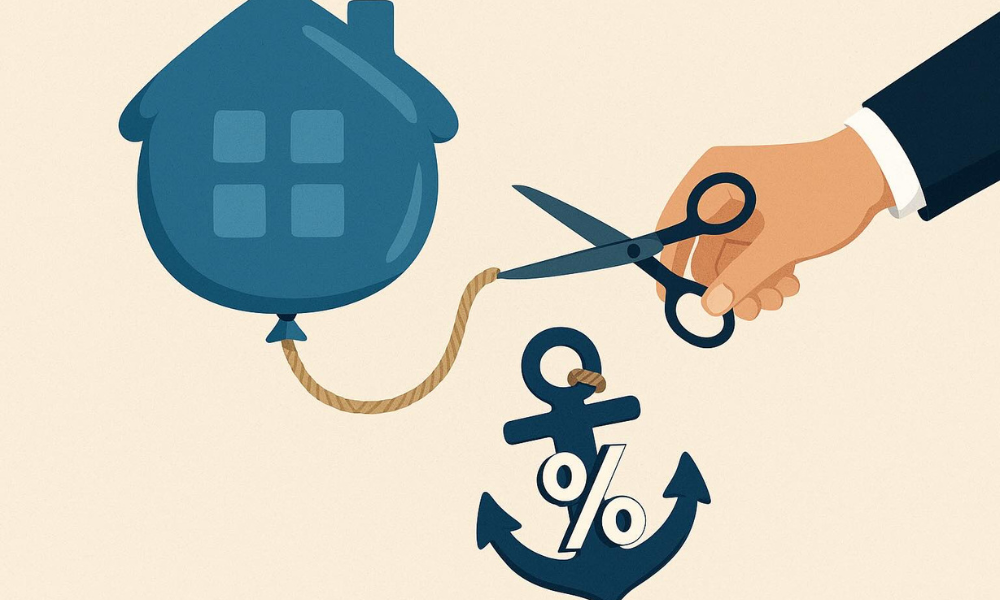Mortgage rates tipped to drop next month – by up to 50bps

With inflation trending down and global trade tensions on the rise, economists are increasingly tipping the Reserve Bank of Australia to cut interest rates at its next meeting in May – a move that could exacerbate a predicted home price boom.
The RBA left the official cash rate on hold at 4.10 per cent during its 1 April meeting, following a 25 basis point cut in February—the first reduction since the tightening cycle ended. But as global conditions grow more uncertain, market expectations for further monetary easing have grown stronger.
Traders are now pricing in a high probability of a rate cut when the RBA reconvenes on 20 May. According to ASX data, there is a 79 per cent chance of a cut to 3.60 per cent, with a minority expecting a sharper 50 basis point move.
Read more: 'House prices will undoubtedly skyrocket' – Economist
The central bank’s board minutes, released today, confirmed that further cuts remain on the table. “Members observed that the May meeting would be an opportune time to revisit the monetary policy setting with the benefit of additional data about inflation, wages, the labour market and trends in economic activity,” the board noted.
Josh Gilbert, market analyst at eToro, said Governor Michele Bullock’s remarks underscore the RBA’s current balancing act. “Bullock has affirmed the Australian financial system is well placed to absorb shocks from the global market … but more importantly, she stated that the central bank's focus 'remains on our dual mandate for price stability and full employment’,” he said.
The RBA’s April decision was made just days before US President Donald Trump announced sweeping “Liberation Day” tariffs on more than 70 countries, including Australia, which now faces a 10 per cent levy on affected exports.
The bank acknowledged the risks posed by such developments in its minutes, citing “heightened and ongoing uncertainty” and noting that central banks in the United States and Canada had flagged “downside risks to growth and upside risks to inflation” from the new tariffs.
Economists suggest the trade dispute could tip the RBA toward action. “Our base case remains for the RBA to cut 25 basis points in May, followed by sequential cuts in July and August,” said Goldman Sachs economist Andrew Boak.
Much depends on the upcoming data. The March quarter consumer price index, due out 30 April, is expected to show core inflation falling below 3 per cent—within the RBA’s target range for the first time in more than a year.
Other key indicators include labour force numbers on 17 April, as well as business and consumer sentiment surveys. Consumer confidence, in particular, has been rattled by the escalating trade row, with the ANZ-Roy Morgan index plunging 2.6 points last week to 84.2—well below the long-term average of 109.7.
“The drop likely reflects the more pessimistic global backdrop following US tariff announcements,” said ANZ economist Sophia Angala.
While falling demand and diverted trade flows may ease price pressures, the bank has also warned that inflation risks remain two-sided. A weaker Australian dollar or deeper global supply chain disruptions could see prices rise again.
“The risks to Australian inflation were more two-sided and would depend on the timing and relative size of the effects on aggregate demand and supply,” the board noted.
Governor Bullock also stressed the unpredictability of current conditions. “A key focus for us is how all this uncertainty is affecting decisions made by households and businesses in Australia,” she said last week.
With the federal election scheduled for 3 May, the RBA will have a clearer view of both the domestic and international landscape by the time it next meets. Whether it moves to ease further could hinge on data released in the days just prior.
For now, the signs point to action. Markets are fully pricing a cut next month, and economists say the central bank may need to move more aggressively if global conditions deteriorate.



